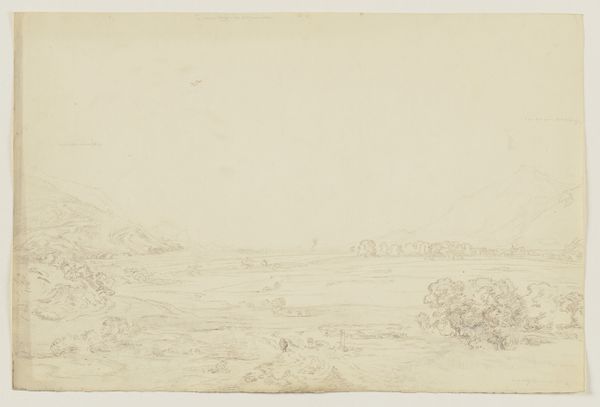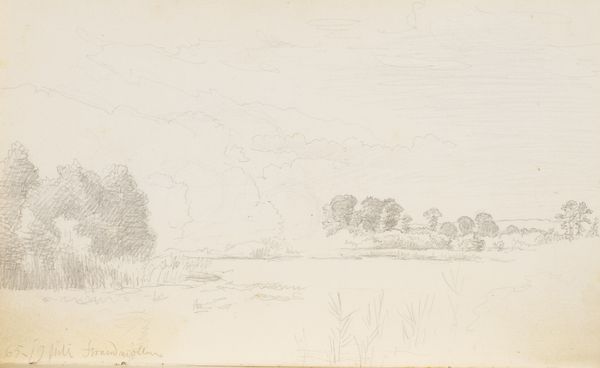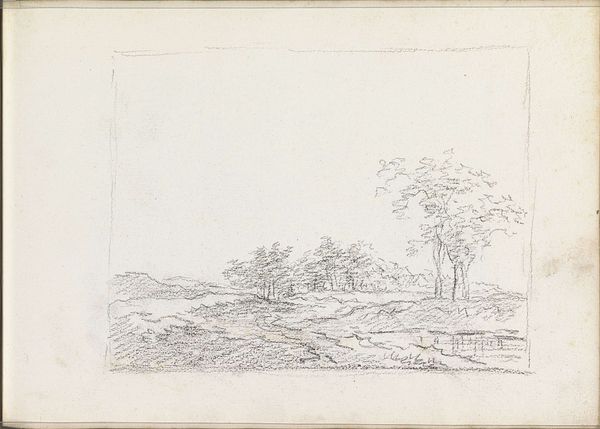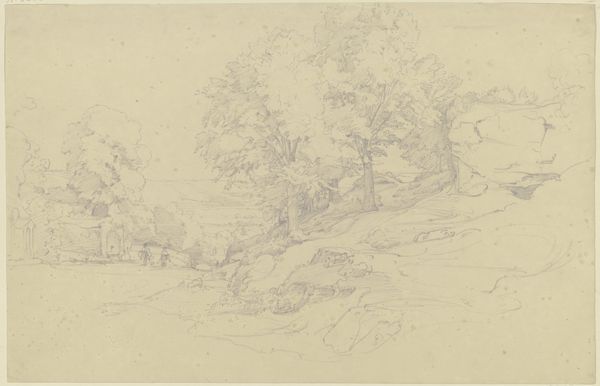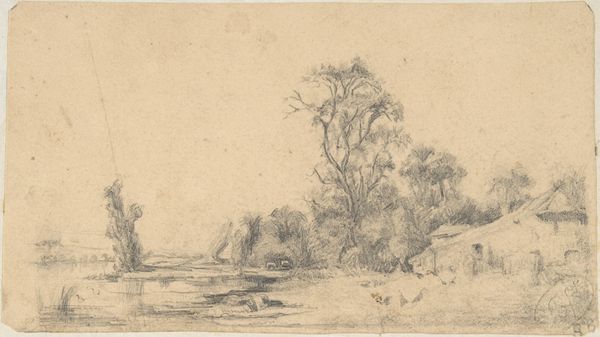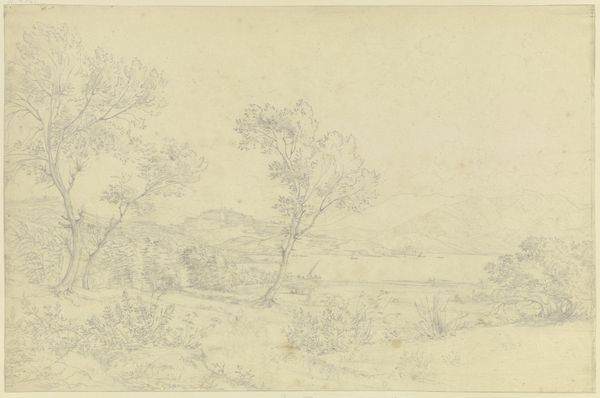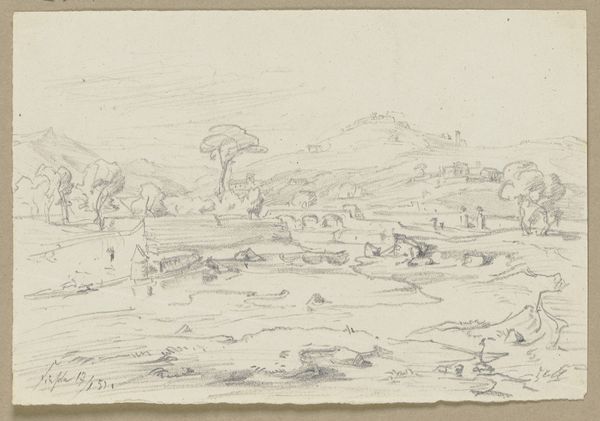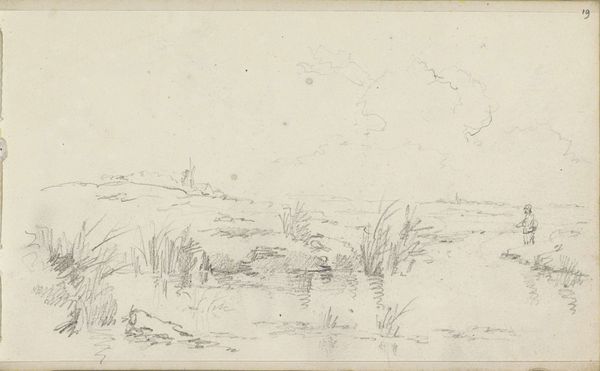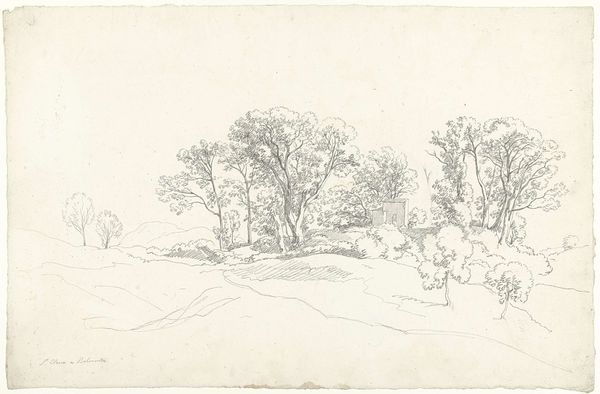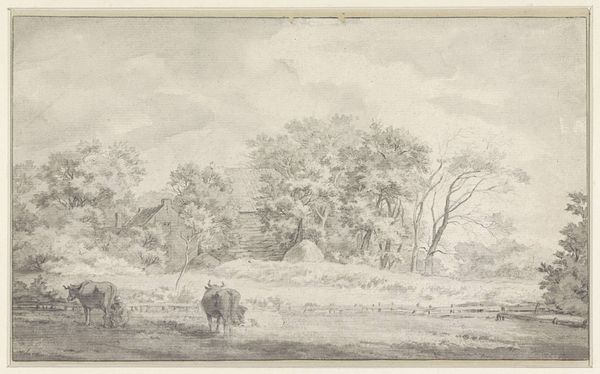
Dimensions: support: 150 x 328 mm
Copyright: CC-BY-NC-ND 4.0 DEED, Photo: Tate
Editor: So, this is William Marlow's "On the Tiber," a delicate pencil drawing. It feels so ephemeral. What strikes you about its creation? Curator: I'm drawn to the physical labor involved in its making. Pencil sketches, like this one, were crucial for larger landscape paintings. Consider the artist traveling to the Tiber, the cost of materials, and the market that consumes these scenic views. Editor: Right, so it's not just about the romantic view, but the material conditions that made it possible. Did those conditions shape the artwork? Curator: Absolutely. The paper itself, the type of pencil Marlow used – these determined the texture, the level of detail he could achieve. It's a product of its time, of available resources and the artist's labor. Editor: That makes me see it differently, less as a spontaneous sketch and more as a calculated product. Curator: Precisely. By examining the materials and processes, we uncover a deeper understanding of the artwork's place in society and in the art market. Editor: I hadn't considered the role of those factors before. It’s fascinating to think about art in this way!
